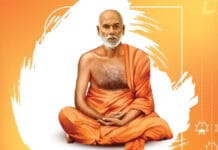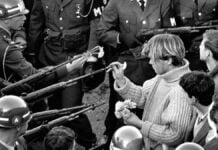A one-act play is a theatrical performance that consists of a single act or scene, usually lasting around 30 minutes to an hour. Unlike traditional plays, which are divided into multiple acts, a one-act play presents a complete story or idea within a shorter timeframe. This condensed format allows for a focused and intense theatrical experience, often exploring a specific theme or conflict with precision and efficiency.
A one-act play is an orderly representation of life, arousing emotion in an audience.
–Percival Wilde
A one-act play is the elaboration of a single, significant event.
–Bernard Grebanier
The history of one-act plays is rich and diverse, dating back centuries and evolving through different theatrical movements and cultural shifts. The concept of one-act plays can be traced back to ancient Greece. Cyclops, a play on the forest God by Euripides, is an early example. Playwrights like Aristophanes and Euripides wrote short dramas as part of more prominent theatrical festivals. Plautus and Terence created comedic one-act plays in Rome, often filled with humour and satire. During the Renaissance, short dramatic pieces known as interludes were performed between the acts of more extended plays. These interludes often had humorous or moralistic themes. In Italy during the 16th century and later across Europe, Commedia dell’arte troupes performed improvised, often comedic, one-act plays. In the 19th and early 20th centuries, vaudeville became popular, featuring a variety of short acts, including one-act plays, as part of a larger variety show.
It was great Norwegian dramatist Ibsen, who, for the first time, introduced the minute stage directions into the one-act play. Before him, one-act plays were written in poetry, but he made prose the medium of his one-act plays. He made the modern one-act play what it is, and his example has been widely followed. George Bernard Shaw and John Galsworthy are two of his greatest followers. The early 20th century saw the rise of experimental theatre movements. Playwrights like Eugene O’Neill experimented with shorter forms, leading to the development of one-act plays as standalone works. Playwrights like Samuel Beckett and Eugène Ionesco embraced the one-act form, often exploring existential and absurd themes. As film gained popularity, short plays found a new medium in the form of short films. Filmmakers like Charlie Chaplin and Buster Keaton produced short, comedic pieces.
A full-length play has more characters and a more complex plot, with perhaps a subplot, and is much lengthier. The challenge for the one-act playwright is creating a story with interesting characters, action, and meaning in a relatively small space. A play with several acts will almost always include an intermission, a time for the audience to take a break, stretch their legs, and have refreshments. One-act plays do not have midpoint breaks; therefore, the play must be so engaging that the viewers will not want to leave the auditorium.
A one-act play’s plot, or action, revolves around one main incident. This action will follow the standard plot chart, beginning with a “cut to the chase” exposition, followed by intriguing rising action. The conflict the main character encounters will enter the drama early on and will be resolved by the end of the play. The climax, or turning point, will likely occur near the end, followed by falling action and resolution.
A one-act play has a unique and specific form. A playwright may begin by listing the characters, sometimes with a short description, though some opt to describe the players as they enter the stage. In a one-act play, the number of characters will be limited. The characters should be believable regarding the storyline and setting. The main character should be someone the audience will be interested in. Drama needs a precise setting, time and place of action. A clear theme (or themes) must be conveyed to the audience. The viewer must be moved emotionally or learn a lesson about life. There are several sub-genres of one-act plays. These include comedy, mystery and science-fiction, to name a few.
Characteristics of One-act Play
- A one-act play has only one act but may consist of one or more scenes.
- One-act plays are usually written concisely.
- It deals with a single dominant situation and aims at producing a single effect.
- It deals with only one theme developed through one situation to one climax to produce the maximum effect.
- It treats the problems of everyday life, such as marriage, punishment for crimes, labour conditions, divorce, etc.
- Like the longer drama, the one-act play should have a beginning, a middle and an end. It may be divided into four stages: The Exposition, The Conflict, The Climax and The Denouement. The exposition is usually brief and serves as an introduction to the play. It is through the conflict that the action of the drama develops. It is the very backbone of the one-act play. The climax is the turning point of the drama. It is an integral part of the one-act play and constitutes its moment of supreme interest. The Denouement is very brief and often overlaps with the climax.
- The action begins right at the start of the play.
- The action has no breaks; it is continuous since it’s a short play with no intervals.
- Everything extra is to be strictly avoided as the play is short, and the action takes place within a short period. It introduces elaborate stage directions to minimize the time taken by the action itself.
- The creation of mood or atmosphere is indispensable to its success.
- There are three dramatic unities which are observed in the one-act play. The unities are — the unity of time, unity of place and the unity of action.
- It aims at the simplicity of the plot, the concentration of action, and the unity of impression. It does not rely on spectacular effects and common dramatic tricks of old.
- The characters in a one-act play are limited in number. Generally, there are not more than two or three principal characters.
- There is no full development of character. All the different aspects of a character are not presented. The attention is focused on only one or two salient character elements, which are brought out by placing the characters in different situations and circumstances. The author implies the past and intimates a character’s future by presenting a crucial moment in that character’s life.
- There is an influence of realism. The characters in the modern one-act play are ordinary men and women. It depicts characters that are real and related to everyday life.
- It must present a question to which the audience eagerly awaits the answer.
- Its language is simple and can be followed without any strain. All extravagance is to be avoided in the dialogue. The dialogue must be purposeful; the best dialogue does several things simultaneously. Every word must be carefully chosen, and sentences must be compact and condensed. Efforts should be made to say whatever is to be told in the least possible words. Thus, the language of the dialogue should be simple, brief and easy to understand. Long speeches, arguments, and sentences would be out of place and lessen the play’s charm and interest.
- The one-act play requires no elaborate setting and costumes, so it is handy to be staged in amateur dramatic societies and clubs.
Components of One-act Play
- The story must revolve around or focus on one event.
- The action of the play should move quickly. There is no time to have a lengthy introduction. Introduce characters and conflict reasonably early on in the action of the play.
- The conflict should be apparent to the audience. It should be resolved by the end of the play.
- The characters should be limited to two to seven, with one evident main character.
- The characters must be believable and exciting!
- Create a setting that is realistic in regards to the characters and plot. The setting can be very detailed or discussed minimally, always in italics.
- There must be a meaningful theme. The audience must walk away from the play having learned a lesson about life and experienced real emotions.
- The play or read-through time should be between twenty and sixty minutes.
- The play should be entertaining and engaging, with some element of suspense.
- The play’s form should follow the standard design.
Major One-act Plays
- Anton Chekhov — A Marriage Proposal (1890)
- August Strindberg — Pariah (1889)
- George Bernard Shaw — The Dark Lady of the Sonnets (1910)
- John Galsworthy — The First and the Last (1919)
- Thornton Wilder — The Long Christmas Dinner (1931)
- Eugene Ionesco — The Bald Soprano (1950)
- Arthur Miller — A Memory of Two Mondays (1955)
- Samuel Beckett — Krapp’s Last Tape (1958)
- Israel Horovitz — Line (1974)
- Edward Albee — The Goat, or Who is Sylvia? (2002)
Today, one-act plays remain essential to theatre, offering a condensed and often powerful storytelling format. They are embraced for flexibility, making them suitable for various venues, from traditional theatres to small experimental spaces. One-act plays provide playwrights and directors with opportunities for concise storytelling, exploration of specific themes, and experimentation with theatrical form.
One-act plays hold great importance in the world of theatre because they can convey a powerful message in a shorter period. Their popularity has increased as they offer a convenient option for performers and audiences. With their compact structure, one-act plays allow for various themes and styles to be explored, making them a versatile and attractive choice for theatre enthusiasts. Additionally, their shorter duration makes it easier for theatre companies to include them in their repertoire, providing more opportunities for emerging playwrights and actors to showcase their talent.




























